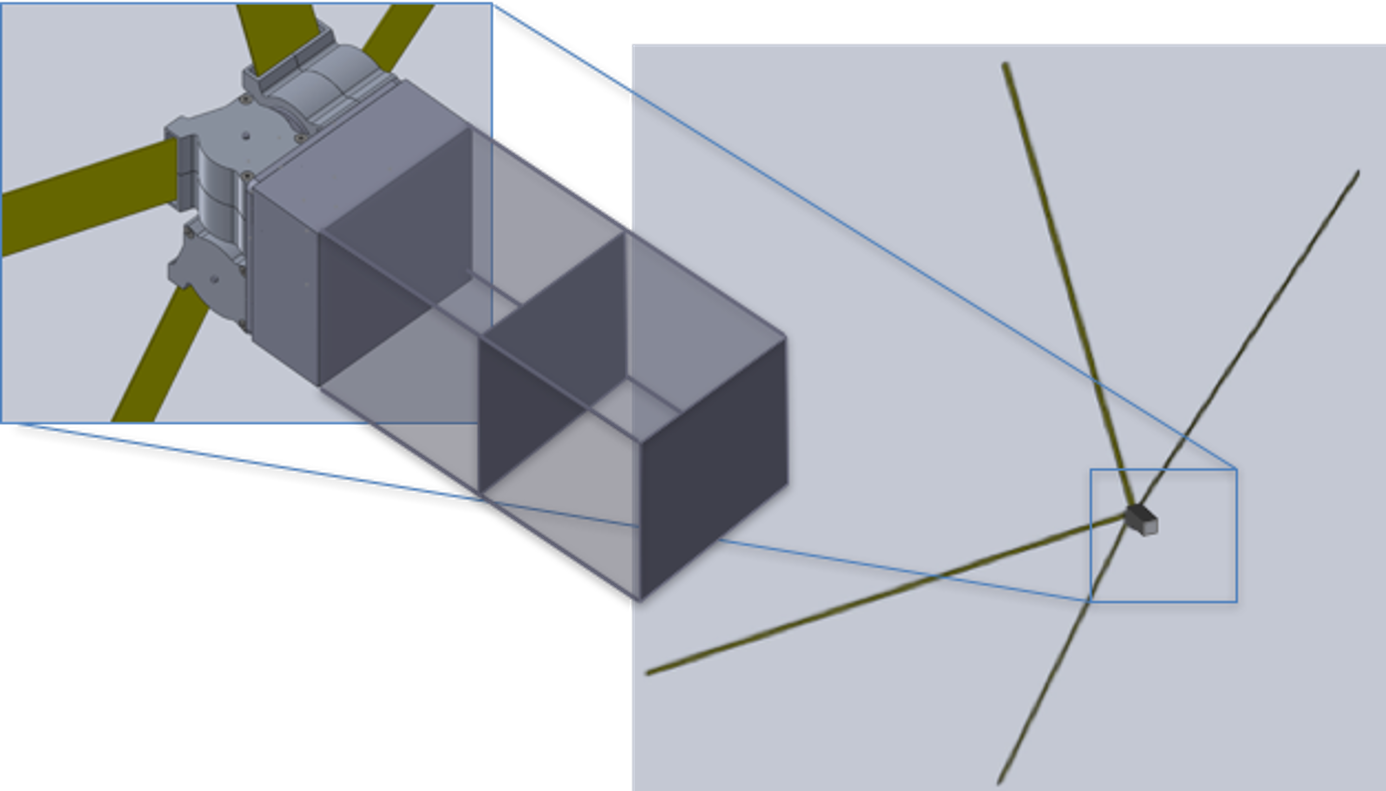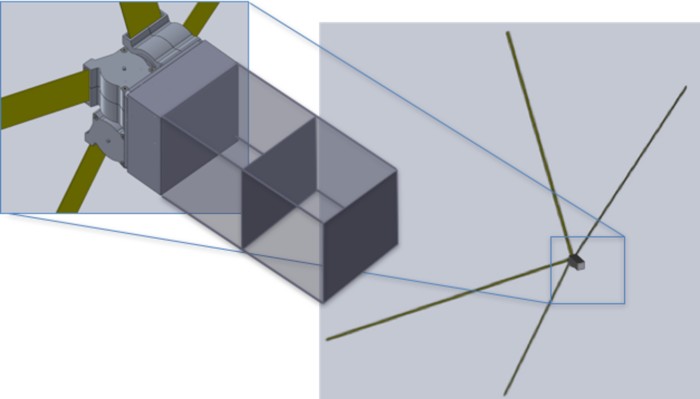by Julia Seibert
The year was 2013, and all eyes were on Canadian astronaut Chris Hadfield. An experienced fighter pilot, seasoned spaceman, and social media sensation, he was at the end of a half-year stint aboard the International Space Station when he dropped quite possibly the most badass music video ever made: a cover of David Bowie’s ‘Space Oddity’ filmed aboard the orbiting lab. With the video garnering around 52 million views to date, it remains Canada’s most significant contribution to the space world in terms of pure publicity.
However, under the surface, there is much more to Canadian space exploration efforts. A long history of international cooperation in the field and a solid constellation of Canadian space companies have secured Canada a seat at the industry’s table – even if no singing is involved. This article will provide a list of 4 space companies in Canada that are at the forefront of industry efforts.
Table of Contents
ToggleCanadian Space Companies
1. MDA
MDA, founded in 1969 and headquartered in Ontario, specializes in satellite systems, geointelligence, robotics and space operations. It is the powerhouse company behind many of Canada’s cosmic achievements, including Canadarm2 (MDA having bought Canadarm1’s manufacturer Spar Aerospace’s space robotics branch), the country’s first military satellite Sapphire, and Dextre. Its antennae, sensors, and instruments can be found on the Curiosity rover, OSIRIS-REx mission, Cygnus spacecraft, and a host of satellites. Today, MDA is hoping to get a foot in the door of the UK space industry, already having developed an antenna for the ISS in collaboration with a UK company. This Canadian space company has already solidified its place in further space exploration plans by snagging a contract to build Canadarm3, which would work aboard the lunar Gateway station as part of NASA’s Artemis program.
Visit company’s profile page.

2. Telesat
Telesat is the world’s fourth-largest fixed satellites services provider. It was founded in 1969 by an act of Parliament, launching the Anik A-1 communications satellite in 1972.This Canadian space company, headquartered in Ontario, was privatized in 1998 and has launched 28 satellites to date, though it no longer operates all of them. Most of its current satellites are in geosynchronous orbits and work with C-, Ka-, and Ku-band frequencies, providing everything from communications to broadcast services. Telesat is also planning a constellation of Low Earth Orbit (LEO) satellites to provide an internet service called Telesat Lightspeed. Despite the company advertising 188 satellites for this service (and harbors plans for many more), only one has launched so far.
Visit company’s profile page.

3. GHGSat
Quebec-based GHGSat hopes to keep an eye on global emissions from space. Founded in 2011, the Canadian space company currently has nine satellites in orbit. These are fitted with a ‘patented interferometer’ focused on the wavelengths emitted by carbon dioxide and methane, which it can trace in high resolution from a 500-km orbit. The company claims to be ‘the only organization today with this capability’. Using the sensors, the satellites can accurately trace emissions back to individual sites such as waste management and coal mining facilities. The space company then combines this data with third-party geospatial intelligence to produce tailored data for its customers, who may include companies hoping to lower their emissions or identify a leak, as well as governments monitoring their activity.
Visit company’s profile page.

4. Magellan Aerospace
Canadian space company giant Magellan’s components can be found on Airbus and Boeing’s jets, though they have their fingers in the space pie too. This Canadian space company, headquartered in Ontario, was founded in 1996 and largely specializes in aviation and military systems, but their satellite buses have been used for Canadian satellites SCISAT-1, Cassiope, and the RADARSAT constellation. The latter two also made use of Magellan’s avionics systems. The explosion of commercial space endeavors has led Magellan to offer the use of their Advanced Satellite Integration Facility (ASIF) and adjacent Assembly, Integration, and Testing (AI&T) facility and clean room to companies needing a working space. Magellan also recently received a contract to design, build, and operate the Redwing satellite, a Canadian military communications and sensing machine that will also attempt to peek at objects in orbit.
Visit company’s profile page.

Canadian Space Exploration Efforts
Though larger entities like NASA usually hog the spotlight when it comes to space, Canada was one of the first to recognize the space field’s potential and invested in space companies. After a slew of defense-centered projects that included the development and launch of its Black Brant sounding rockets, Canada became the fourth country to operate a satellite with the launch of Alouette 1 in 1962. Parliament, noting the commercial possibilities of the field, established communications company Telesat in 1969. The aforementioned Anik A-1, the first-ever commercially operated communications satellite, was launched three years later. Telesat, now a private company, remains alive and well today, and Canada has since embarked on a range of satellite projects including the RADARSAT Earth observation constellation and Near Earth Object hunter NEOSSat.
But Canada’s true strength in space lies in its talent for robotics and cooperation with other nations. While lacking the massive budget of US and Russian space programs, Canada and its space companies have often provided vital elements of NASA or international missions, including Apollo 11’s landing gear. When NASA’s Space Shuttle program kicked off in the 1980s, Canadian company Spar Aerospace (now MDA) provided the orbiter’s robotic arm, ingeniously named Canadarm. The first of many Canadian astronauts flew aboard the Shuttle in 1984, and the country entered the ISS partnership two years later. Recognizing the need for a centralized institution to look over all these efforts, the Canadian government established the country’s space agency (CSA) in 1989.
Canada has remained a trusty partner aboard the ISS, frequently launching astronauts, experiments, and machines such as the Mobile Base System, a repairs platform used on spacewalks, and of course, Canadarm2. The Canadian maintenance bot, Special Purpose Dexterous Manipulator (SPDM) – or Dextre to his friends – has taken over some spacewalk duties from astronauts, has demonstrated satellite refueling capabilities, and even inspired neurosurgery bot neuroArm. Outside the station, Earth’s orbit is thick with satellites hosting some form of Canadian equipment, many of them collaborations with NASA or ESA. Canadian space companies’ tech also sits aboard the Mars Curiosity rover, the James Webb Space Telescope (JWST), as well as the OSIRIS-REx mission to faraway asteroid Bennu.
You may also like:
15 Most Exciting NewSpace Companies to Look Out for in 2023
The 10 Best Space Companies to Work for in 2023
Top 5 Private Space Companies in India & Industry Landscape
Contribution of Canadian Space Companies
Compared to the likes of NASA and the US industry, Canadian space companies’ contributions might seem insignificant. Though the CSA and several commercial companies have supplied parts to countless satellites and groundbreaking machines such as JWST, the initial effort was usually spearheaded by the country’s southern neighbor. Given the CSA’s meagre space budget of US $329 million for the 2022-23 period – compared to the billions available to NASA – it is not surprising that it must leverage partnerships with other nations to leave the planet at all. Therefore, by partnering with the US on projects such as its Artemis program (and signing the Artemis Accords, a US-led non-binding agreement on guidelines and principles for an age of space exploration), it can participate in these efforts without breaking the bank. In return, the US gains Canadian support – both political and technological – for its endeavors.
Canada has nevertheless managed to carve out a few niches for itself in the space field, and develop some space industry companies. Communications, courtesy of Telesat, is one of them, with Earth observation being another. In addition to GHGsat’s services, Canada has developed sensors and satellites measuring weather, the ozone layer, the state of the Arctic, and climate change. One of its satellites, RADARSAT-1, even produced the first high resolution image of Antarctica in 1997. Space medicine, as described by Shelli Brunswick, Chief Operating Officer of The Space Foundation, is another area Canada has focused on. The neuroArm springs to mind, but the country has also flown experiments pertaining to vascular health to the ISS, and conducted a psychosocial experiment on astronauts’ mental health.
Our Take on Canada and It’s Space Companies’ Development
While factors such as a lean space budget stemming from a lower GDP are hard for the CSA to overcome, the commercial sector has potential, according to founder of Ontario-based Stardust Technologies, Jason Michaud (as reported by SpaceNews).
“In Canada, there is a huge amount of great talent, just in rocketry alone. This has stemmed from a grassroots movement of students who want to build rockets,” he says.
His observation highlights one of the major drawbacks of the Canadian space industry: lack of orbital rockets. Without a readily available launch vehicle, the industry might always be dependent on the US or Russia to launch its satellites, increasing reliance on outside entities. A spaceport in Canso is currently being developed, but no Canadian rockets exist to launch from it. However, Canada’s northern inclination and vast uninhabited areas might lend themselves well to launching polar smallsats, which is a market gap the UK industry is currently taking on.
Despite Canada’s valiant space efforts, which include Earth observation and international collaboration, its efforts pale against true space superpowers such as China and the US. Still, with a new generation of rocket enthusiasts and the first Canadian astronaut headed for the moon in 2024, a surge of support might turn the tides. Canadian space companies and their knack for robotics could supply machines used for space mining, for example. This puts its involvement at the heart of colonization missions, but does not require the development of extensive space infrastructure like that of NASA.
Hadfield, for one, is optimistic about Canada’s future as lunar colonization becomes a reality. Acknowledging that Canada’s ‘deep expertise in robotics’ is vital to the Gateway station, he argues that exploration efforts are ‘going to need lots more than that’. Lunar mining, for one, could open the door to increased involvement.
“There’s going to be a lot of mining on the moon. We’re experts at hard rocket and remote mining,’ he told the National Post. ‘To me, not only is Canada currently committed to being part of the lunar exploration and settlement, but there’s going to be great opportunity in the future also.”
If you found this article to be informative, you can explore more current space news, exclusives, interviews, and podcasts.
Featured image: Cassiope Satellite. Credit: Magellan Aerospace
Share this article:








